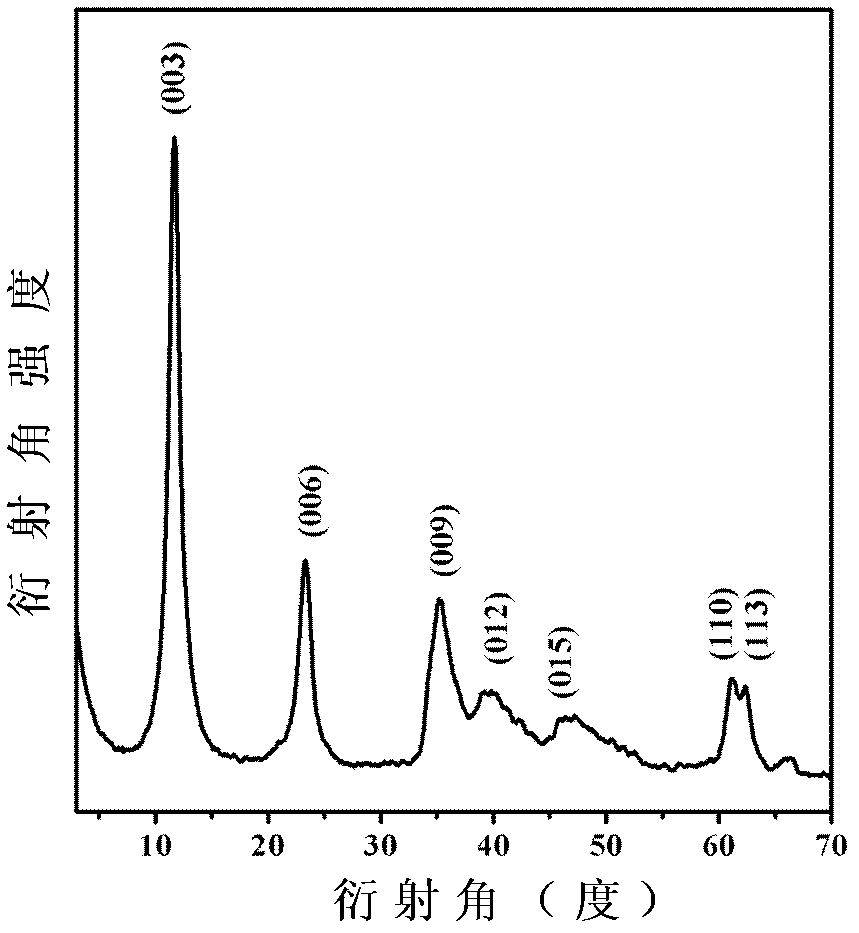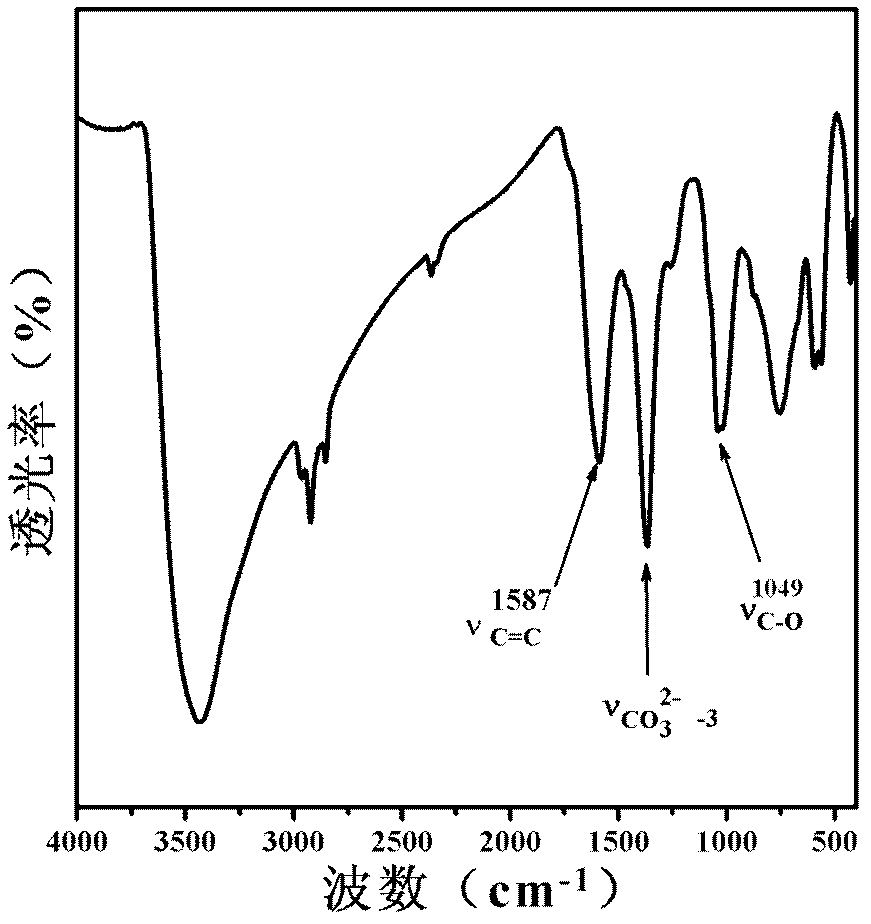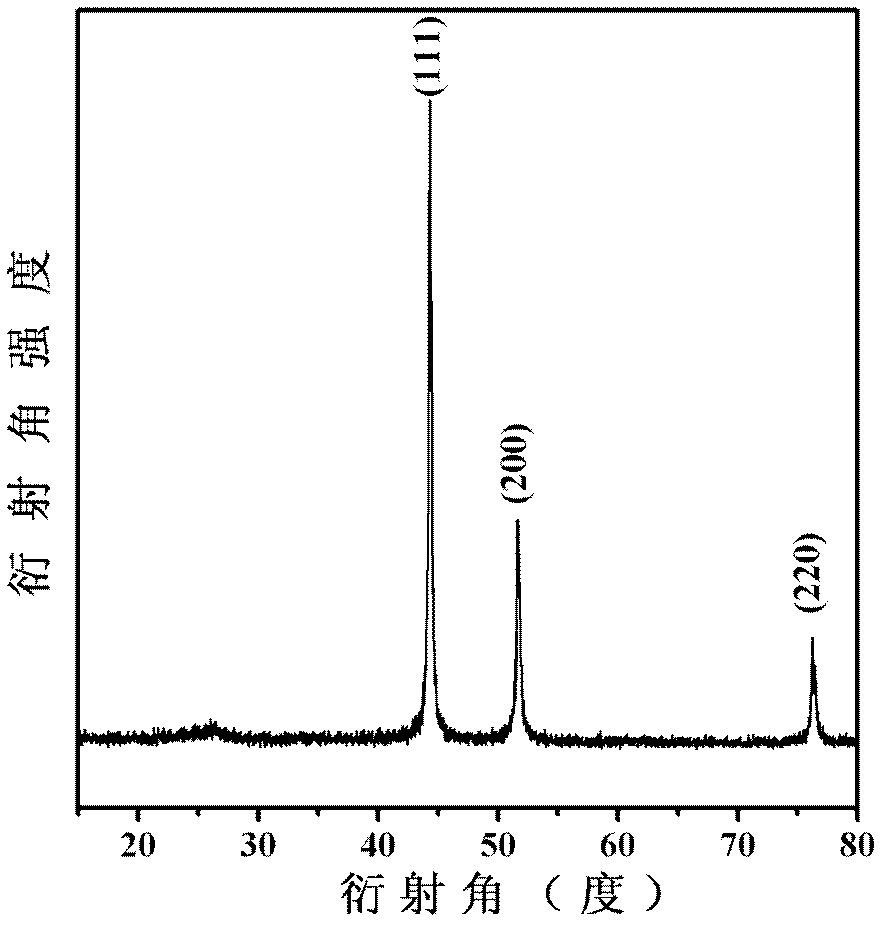Graphene loaded high-dispersion nano Ni catalyst as well as preparation method and application thereof
A catalyst and high-dispersion technology, which is applied in the preparation of carbon-based compounds, chemical instruments and methods, and the preparation of organic compounds. It can solve the problems of poor particle dispersion, affecting activity, and reducing the number of active centers, so as to improve structural stability. and chemical stability, good catalytic hydrogenation performance
- Summary
- Abstract
- Description
- Claims
- Application Information
AI Technical Summary
Problems solved by technology
Method used
Image
Examples
Embodiment 1
[0023] Graphite and concentrated sulfuric acid, sodium nitrate and potassium permanganate are fully mixed in the ratio of 1: 0.5: 23: 3 by mass ratio under ice bath conditions and then warmed up to 35 ° C; by graphite: the mass ratio of deionized water is Add deionized water at a ratio of 1:50, heat up to 98°C and react for 0.5 hours; add deionized water and 30% hydrogen peroxide sequentially at a ratio of graphite: deionized water: 30% hydrogen peroxide mass ratio of 1:100:10; centrifugal separation , followed by dilute hydrochloric acid and deionized water to wash the filter cake to no SO 4 2- And it is neutral, then the product is dried at 70°C to obtain graphite oxide;
[0024] Disperse the above-mentioned graphite oxide in deionized water, prepare a dispersion liquid with a concentration of 3 mg / mL, ultrasonicate for 3 hours, let it stand for 12 hours, and then centrifuge at 3900rmp for 15 minutes, and the obtained supernatant is a graphene oxide solution;
[0025] Prep...
Embodiment 2
[0029] Graphite and concentrated sulfuric acid, sodium nitrate and potassium permanganate are fully mixed in the ratio of 1: 0.5: 30: 5 by mass ratio and then heated up to 40 ° C under ice bath conditions for 1.5 hours; by graphite: deionized water mass ratio is Add deionized water at a ratio of 1:95, heat up to 90°C and react for 6 hours; add deionized water and 30% hydrogen peroxide sequentially at a ratio of graphite: deionized water: 30% hydrogen peroxide mass ratio of 1:130:11; centrifugal separation , followed by dilute hydrochloric acid and deionized water to wash the filter cake to no SO 4 2- And it is neutral, and it is dried at 70°C to obtain graphite oxide;
[0030] Disperse graphite oxide in deionized water, prepare a dispersion with a concentration of 2 mg / mL, ultrasonicate for 2 hours, let it stand for 12 hours, and then centrifuge at 3500rmp for 10 minutes, and the obtained supernatant is graphene oxide solution;
[0031] Prepare the mixed salt solution of nic...
Embodiment 3
[0035] Graphite and concentrated sulfuric acid, sodium nitrate and potassium permanganate are fully mixed in the ratio of 1:1:15:2 by mass ratio and heated up to 25° C. after 0.5 hours under ice-bath conditions; by graphite: the mass ratio of deionized water is Add deionized water at a ratio of 1:40, heat up to 100°C and react for 1.5 hours; add deionized water and 30% hydrogen peroxide sequentially at a ratio of graphite: deionized water: 30% hydrogen peroxide mass ratio of 1:90:5; centrifugal separation , followed by dilute hydrochloric acid and deionized water to wash the filter cake to no SO 4 2- And it is neutral, then the product is dried at 60°C to obtain graphite oxide;
[0036] Disperse graphite oxide in deionized water, prepare a dispersion with a concentration of 5 mg / mL, ultrasonicate for 4 hours, let it stand for 24 hours, and then centrifuge at 3900rmp for 15 minutes, and the obtained supernatant is graphene oxide solution;
[0037] Prepare the mixed salt solut...
PUM
| Property | Measurement | Unit |
|---|---|---|
| specific surface area | aaaaa | aaaaa |
| specific surface area | aaaaa | aaaaa |
| specific surface area | aaaaa | aaaaa |
Abstract
Description
Claims
Application Information
 Login to View More
Login to View More - R&D
- Intellectual Property
- Life Sciences
- Materials
- Tech Scout
- Unparalleled Data Quality
- Higher Quality Content
- 60% Fewer Hallucinations
Browse by: Latest US Patents, China's latest patents, Technical Efficacy Thesaurus, Application Domain, Technology Topic, Popular Technical Reports.
© 2025 PatSnap. All rights reserved.Legal|Privacy policy|Modern Slavery Act Transparency Statement|Sitemap|About US| Contact US: help@patsnap.com



